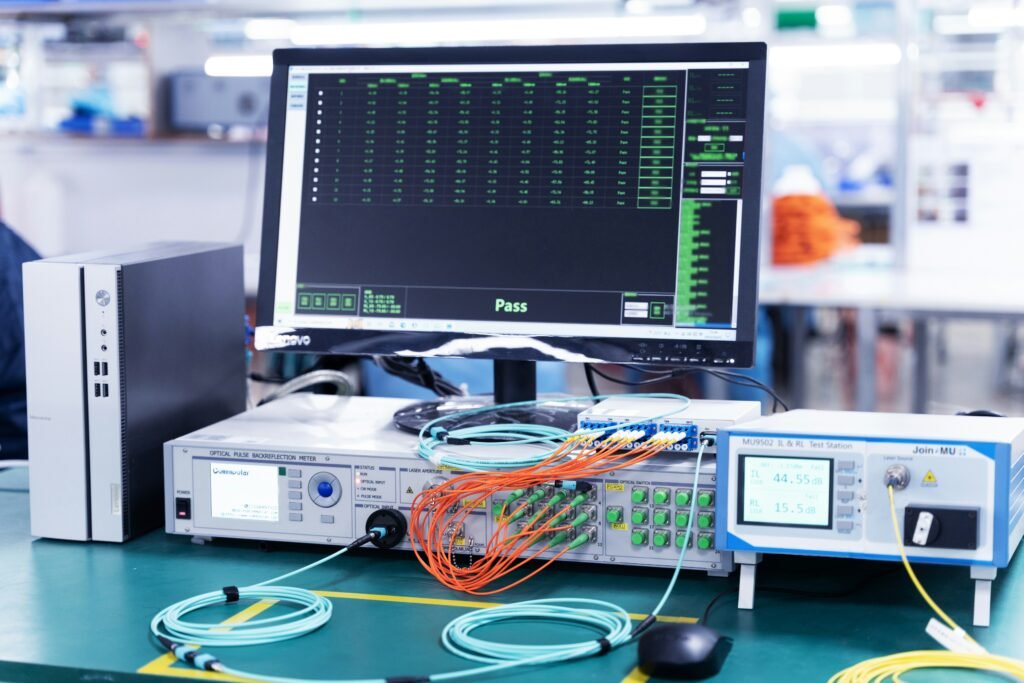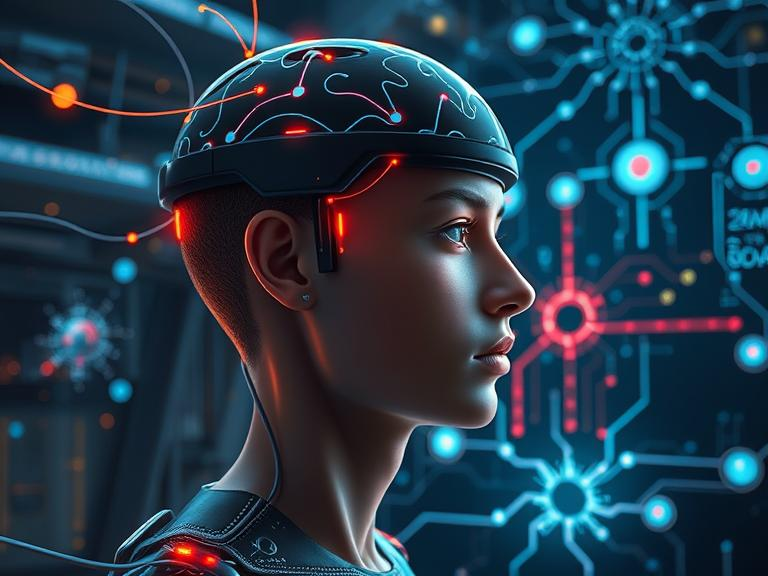Can technology read your mind: 10 Shocking Facts

Can technology read your thoughts? It sounds like something from a science fiction film, but advances in neuroscience and artificial intelligence are making that date closer. From brain-computer interfaces to emotion-detecting algorithms, scientists are creating tools that can decode the activity inside our skulls in ways that were once unimaginable. In this article we’ve put together 10 shocking technologies and facts about human mind that show how far technology has come to understanding enigma called human mind.
With the pace of invention increasing, the boundary between science fiction and reality is disappearing faster than ever. Technologies voice recognition is so advanced that it can read your mind. It sounds like something out of a sci-fi movie, but scientists are already using next-generation neurotech to decode thoughts, emotions, and even dreams. For everything from medical breakthroughs to next-generation communication, the potential is both thrilling and a little terrifying. Read on to discover 10 insane facts you never knew about this incredible technology.
Table of Contents
Is It Possible for Technology to Read Your Mind?
Can technology read your mind? It may seem like science fiction, but new research in neuroscience and artificial intelligence (AI) share an exciting conclusion: We are inching closer and closer to the ability to interpret brain activity. For instance, brain-computer interfaces (BCIs), which enable users to control devices solely with their thoughts. BCIs can read the electrical signals in the brain from electrodes, which may be sent to electronics to effect a response. The question people might well ask is: could technology someday read your mind in a broader way? While we are not there yet, research is advancing rapidly in brainwave analysis and neural decoding.
But despite these advancements — mind-reading will always be a long way off. Today’s technology can analyze simple brain patterns, emotions and intentions, but falls a long way short of decoding intricate thoughts or memories. However, as AI and neuroscience grow, the potential for mind-reading machines may be even more realistic, changing the nature of human interactions with machines while also paving the way for new forms of expression.
The Rise of Brain-Computer Interfaces: Mind-Controlled Devices

BCI technology is changing how we interface with technology. With BCIs, users communicate directly with external devices – such as computers, prosthetics, or even video games – just by thinking about it! This cutting-edge technology utilizes cerebral electrical signals and remaps them into an action. BCIs have the potential to help restore lost functions for people with disabilities, providing new hope for many who have lost the ability to move or speak. With this, BCIs are likely to improve both access and interaction with the digital universe as research advances.
The possibilities for mind-controlled gadgets extend well beyond the medical realm. Brain-computer interfaces are further set to reshape user experiences in entertainment, gaming, and even virtual reality. Just think about what it’d be like to play video games or control smart home systems with just your mind. With the advancement of these technologies, BCIs can be integrated, resulting in smarter and more responsive devices, fundamentally changing our interaction with technology. As we continue to make progress in this field, the future of mind-controlled devices is endless, ushering in a new chapter in the evolution of human and machine collaboration.
Can Artificial Intelligence Decode Your Brain Waves?

Can A.I. read your brain waves? With advancements in both AI and neuroscience, we can increasingly design AI systems capable of interpreting brain waves. BCIs implement AI algorithms for decoding electrical signals from the brain so that one can communicate directly with an external device. These signals, produced by the fire of neurons, can be mapped to basic intentions, emotions, or cognitive states. AI helps make this communication possible by processing and translating the signals received from the brain, which can be turned into actionable data that can control devices with thought alone. This potential is not lost on some industries, such as healthcare and accessibility, but the capabilities of brain-wave decoding remain to be seen.
But while the progress is impressive, the AI’s ability to decode brain waves remains limited. “At present, BCIs can capture simple signals like movement intentions or emotion states but not decode more complex thoughts or memories. While AI can read patterns, it is not yet at a level where it comprehends human cognition. However, with the continual evolution of AI, we can expect developments that explore the limits of decoding brain waves to unlock unprecedented opportunities for interaction between humans and machines.
Mind-Reading Technology in the Healthcare Industry

(BCIs), are starting to make waves in the healthcare industry. BCIs may transform patient care, allowing people with neurological disorders to communicate by translating what the brain is trying to convey. People with disabilities such as paralysis, stroke or amyotrophic lateral sclerosis (ALS) can use BCIs to communicate or control prostheses — with only thought. This technology enables people to communicate with their surroundings in terms that are unimaginable with the human hand, which success promises hope for people with severe disabilities. Additionally, the more “immediate” aspect of this technology means that algorithms can analyze brain waves which allows a deeper comprehension of the patient’s thoughts and desires to emerge, thus offering treatment options that are more precise and appropriate.
This technology that read minds is also used in diagnosing and treating mental disorders, in addition to improving communication and mobility. Brain patterns are also being used more and more to make sense of conditions such as depression, anxiety and PTSD and to create more personalized treatments for people. At the same time, by studying brain signals, it would allow clinicians to understand the neural basis of these disorders, which can help lead to early diagnosis and therapies. Another significant application of mind-reading technology lies within healthcare and medicine.
How AI is Enhancing Thought Recognition

Artificial Intelligence (AI) is revolutionizing thought identification by developing new technologies such as brain-computer interfaces (BCIs) and neural decoding systems. Analyzing Complex Data As Researchers Unlock AI from Brain Waves In such systems, brain activity is captured and mapped to a neural signal which is used as the basis for achieving real-time communication between the brain and outside devices. Giving a meaning to text and a way to understand it, this technology can not only help people suffering disabilities but also enable us with a thought-controlled way of communicating with our digital device. Thanks to AI’s capability to handle massive volumes of brain data quickly and precisely, the technique for recognizing thought is now enhanced and the boundary of human cognition has advanced.
With the ongoing advancement of AI, thought recognition technology is emerging that provides more accurate readings of a person’s brain activity. AI systems can now derive patterns associated with particular thoughts or behaviors — with huge implications for industries like health care, mental wellness and entertainment. This will revolutionize user experience through more intuitive control and open the possibility of a future where thought recognition could reshape communication with machines and expand our comprehension of human cognition.
The Surprising Role of Neuralink in Brain-Reading Tech

This is one area of brain-reading where a tech company, Neuralink, co-founded by Elon Musk, is working hard to get its brain-reading technology off the ground. This is based on the fact that you have to create brain-machine interfaces (BMIs) to communicate with external devices and control them with thought. Neuralink aims to decode the brain activity with a precision never seen before by implanting tiny electrodes in the brain, paving the way for groundbreaking possibilities for those suffering from neurological conditions such as paralysis, blindness and memory loss, providing renewed hope for medical treatments.
Neuralink involves more than medicine; it tests human limits. BCI companies have also seen interest from the nascent field of AI — a way of combining technologies to improve the quality and speed of reading brain activity. Here the thought recognition could become much more sophisticated, opening doors to human-machine interfaces based solely on thought. As the technology develops, it should enable cognitive enhancements, human augmentation, and the potential of merging human intelligence with AI, transforming our relationship with our brain and machines.
How Mind-Reading Technology Is Revolutionizing Communication

Disruption can be seen as mind-reading tech, a game changer in communication which opens more doors for solution, interaction framework among devices and between devices. Brain-computer interfaces (BCIs) are a technology that can decode brain signals and convert them into actionable commands, enabling people with disabilities (e.g., paralysis) to create speech or movements, even without speech or physical motion. This new technique allows them to communicate via messages, operate technology and even convey emotions just by thinking about it, and enhances their quality of life while giving them new means of communication in a digital age.
But mind-reading technology isn’t just for helping those with physical impairment; it’s improving everyday communication, too. Decoding of brain signals through joint use of AI and neural decoding techniques is enabling devices to be controlled more naturally — through thought. This ensures that interactions with technology become faster and more natural as users no longer have to depend on physical gestures or voice inputs. The potential impact of such tools is large and as this technology will continue to evolve will you find more advanced methods of communication, a completely new form of interaction in the human and machine relation.
Privacy Concerns: Can Your Thoughts Be Exposed?

Privacy concerns over exposing personal thoughts are stretching the limits of relevance as mind-reading technology matures. BCIs (brain-computer interfaces) and neural decoding systems can read and interpret brain activity, leaving open the possibility that sensitive internal data could be accessed without consent. Although these technologies are primarily devised for medical benefits or accessibility, the risk of uncontrolled access or abuse of brain signals raises serious ethical and privacy concerns. Protecting individual privacy requires the security of these systems.
Some of the most alarming would-need-to-know-with-me degree of concern is the thought that there were unauthorized access to my thoughts, resulting in loss of my mental privacy. As decoding tech becomes more sophisticated, the neck of the metal has to become increasingly strict to protect users’ mind records. This includes building preventive measures against vulnerability and abuse, and guaranteeing that subjects still own their opinions, attitudes, and all data streams that may emerge from their brains, especially as lives become more interconnected.
What Military Technology Reveals About Mind Control

One of them is military technology for mind control using BCIs and neural manipulation methods. These technologies are designed to help soldiers perform better or communicate with one another or, in some cases, control gear simply by thought. Elaborate on how BCIs could allow soldiers to navigate drones or other military tech with their minds, enhancing speed of response and accuracy. Although there will be a continued focus on military capabilities, this also raises fears of coercion, manipulation, or infringement of personal autonomy.
To create the militarized mind way for the future seemed something evil, even as well as with their role of emphasizing control and influence. As research advances, even more alarming prospects have emerged, including the potential for the use of neural manipulation to regulate behavior and stifle dissent. These promises, combined with the more comprehensive and expansive potential of an army mobilized by coercive mind control, bring sharper focus to the need for, and the potential for, regulations that protect against abuses of the technology and guard against mind control as a weapon of war.
The Impact of Mind-Reading on Consumer Behavior

Because of the advent of mind reading technology, companies are starting to use brain-computer interfaces to craft how consumers think of their products. This approach could help firms understand what consumers feel, want, or want to do without the need for traditional surveys or focus groups. Using this data, businesses can customize their marketing strategies and also adapt their products and services accordingly, resulting in a more customized experience for consumers that may lead to even greater customer satisfaction and loyalty.
Yet the application of mind reading technology to consumer behavior also raises ethical concerns about privacy and manipulation. While it enables decoding thoughts and emotions, there is potential for misuse of personal mental data for financial gain, threatening consumer privacy. Companies might use this to influence buying decisions, or even to run hyper-targeted ad campaigns that seem invasive. As this technology advances this is an area that requires regulation to protect consumers from exploitation while also ensuring that mind-reading is a service of choice which optimizes a user experience rather than a means of behavioral manipulation.
How Close Are We to Technology That Can Read Your Mind?

This is the direct consequence of the recent advances in BCIs (a.k.a. brain-computer interfaces) and the subsequent decoding of the brain. At present, BCIs can sense brain activity and visual cues, enabling thoughts or audiovisual associations to drive devices. Researchers are also working on translating brain waves into more complex thoughts, potentially precipitating systems that really know you well. But while this is an exciting step forward, we’re nowhere near julienning the mind with 100 percent precision just yet.
However, there remains a lot of challenge ahead. The current technologies cannot decode all human thought patterns and emotions. Although we can infer basic intentions and control devices, decoding specific thoughts, memories, or sophisticated cognitive tasks are all beyond reach. Sure, develop into more smash hits with the progression of AI and neuroscience, yet there is, at any rate, an extended period before it becomes conceivable to hack a crowd’s brains, transforming us from straightforward interpreters of some music signal into full restoratively individual, intuitive aural systems.
Ethical and Legal Implications of Thought-Reading Technology
Implications of Thought-Reading Technology. The advent of technology capable of deciphering our thoughts raises profound ethical and legal questions, especially regarding individual privacy and autonomy. As brain-computer interfaces (BCIs) and neural decoding systems continue to advance, they might gain access to the most private mental workings of individuals. One big question is whether it is ethical for companies, governments — and even employers — to use such technology to monitor, influence or even potentially control thoughts. Protecting the mental privacy of users will be necessary, but this will require stringent laws and regulation to protect the individual from having a third-party instal a thought or manipulate the internal voice of the victim.
Such developments in thought-reading technology present challenges in the existing legal frameworks used to protect personal data and enforce consent. Data privacy laws, as they exist today, can barely comprehend the complexities of mental data, which will be far, far more sensitive than physical or behavioral data. As these technologies advance, lawmakers will need to ensure that the rules of the road are established regarding who owns this data, how it can be used and who has the right to access it. This makes ethical and legal handling of thought reading technologies imperative to protecting rights of individuals against exploitation, coercion, or misuse without appropriate oversight.
Conclusion: The Future of Mind-Reading Technology—Fact or Fiction?
This blog post will explore the recent developments in this field, and the potential for mind-reading technology of the future. That said, existing technologies can only read rudimentary signals encoded by the brain — intentions and emotions, for example — and cannot yet crack the code on more complex thoughts or memories. But as research continues, we’re likely to start seeing more advanced systems capable of closing the mind-versus-machine divide.
While the potential is tantalizing, there are certainly some hurdles to overcome — particularly with respect to privacy, ethics, and technology limits. Some of the concerns include the risk of unauthorized access to personal thoughts and the potential for exploitation or manipulation based on users’ intimate information.
Whether mind-reading technology goes mainstream ultimately hinges on a combination of technological breakthroughs, and societal choices about how we want to responsibly use it. We may not have reached the levels of mind reading yet, but science fiction has become futuring!





